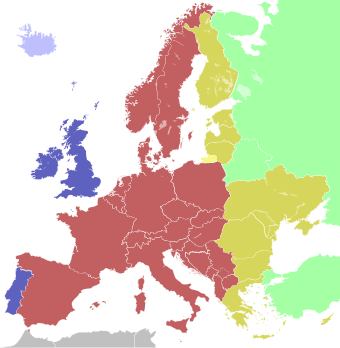
Time zones of Europe in relation to UTC:Light colours indicate countries that do not observe summer time. Central European Summer Time (sometimes called Central European Daylight Time) is the name for a time zone. It is a daylight saving time. Some of the countries that have Central European Time shift their clocks forward one hour, during the summer months and shift it one hour backwards during winter months.
A research station called Troll in Antarctica uses this time zone in the winter, but uses Greenwich Mean Time in the summer.